Ten worst plagues in human history.
Source | Xinhua International
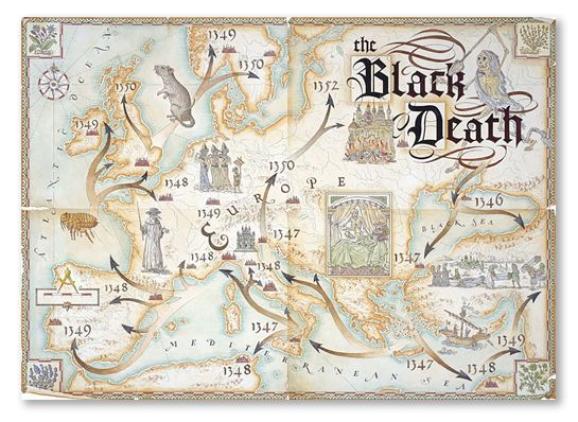
△
Map of the spread of the Black Death
While human beings improve their own destiny, they also increase their weakness in the face of diseases. We should realize that the strength of human beings is limited, and we should bear in mind that the more we win, the more we push infectious diseases to the edge of human experience, and the more we clear the way for catastrophic infectious diseases. We can never escape the limitations of the ecosystem. Whether we are happy or not, we are all in the food chain, eating and being eaten.
-william mcneill
William Hardy McNeill
Ten worst plagues in human history.
Athens plague
(430 BC–427 BC)
▽
From 430 BC to 427 BC, there was a great plague in Athens, nearly half of the population died and the whole Athens was almost destroyed. Some experts believe that this epidemic is the plague. The plague in Athens was a devastating infectious disease, which attacked the whole city of ancient Greece and Rome.
The Greek historian Thucydides described the plague that destroyed Athens in this way. "People who are strong and healthy are suddenly attacked by a severe high fever, their eyes are red as if they are spraying flames, and their throats or tongues begin to be congested and emit unnatural stench. With vomiting and diarrhea, they are suffering from terrible thirst. At this time, the patients’ body pain and inflammation turn into ulcers, and they cannot sleep or endure the touch of the bed. Some patients wander naked in the street, looking for water to drink until they fall to the ground and die.
Even dogs died of this disease, crows and vultures that ate human bodies lying everywhere died, and those who survived either lost their fingers, toes and eyes or lost their memories. "
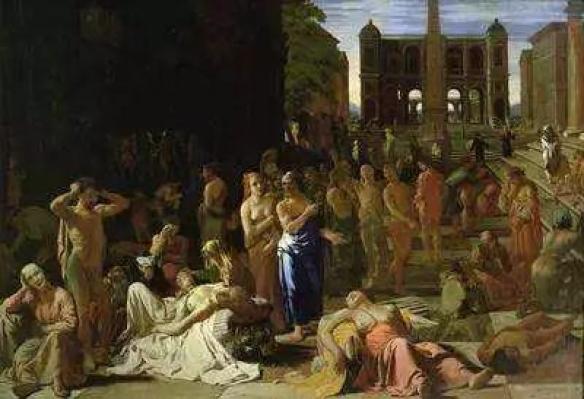
"Antony plague" in ancient Rome
(AD 164-180)
▽
The "Antony plague" in ancient Rome was caused by infection. According to historical records, the symptoms of this infectious disease are: severe diarrhea, vomiting, sore throat, ulceration, high fever and hot hands, gangrene or gangrene, unbearable thirst, and purulent skin.
Soldiers who fought in the Near East returned to the Roman Empire, bringing smallpox and measles to the people of Anthony. Infectious diseases killed two Roman emperors. The first one was Lucius Verus, who died of illness in 169, and the second one was his successor, Kyle Aurelius Antoninus, who was an emperor until 180 AD, but was also doomed by infection.
The plague broke out again nine years later. According to Dioka, a Roman historian, at that time, 2,000 people died of illness in Rome one day, equivalent to a quarter of the infected people. It is estimated that the total death toll is as high as 5 million. In some places, the plague killed one third of the total population, greatly weakening the Roman army.
The plague also had a great influence on the society and politics of the Roman Empire, especially on the field of literature and art. In the picture below, the remains in the pit are the bones of the victims of infectious diseases, which is shocking.
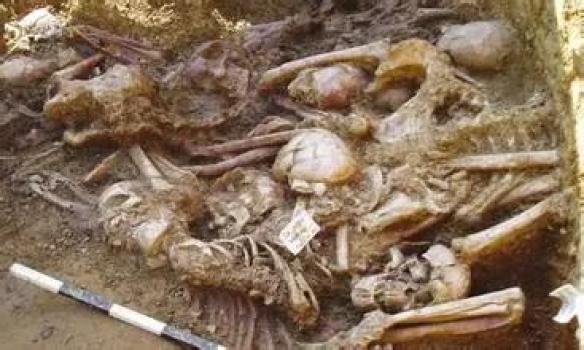
At that time, it was in the second year of the Peloponnesian War, just as the victory of Athens was within reach. It is said that plague was introduced into Athens from Piraeus, a port city of Athens and a major source of food and daily necessities. Sparta and some parts of the eastern Mediterranean were also attacked by diseases.
This plague was revived twice in the winter of 429 BC and 427 BC. Modern historians disagree that plague was the reason why Athens lost in the Peloponnesian War. However, it is generally believed that the defeat of the war paved the way for Macedonia’s victory, and finally, the Roman Empire was established. According to historical records, the plague broke out in various forms, including typhoid fever, smallpox, measles, and toxic shock syndrome.
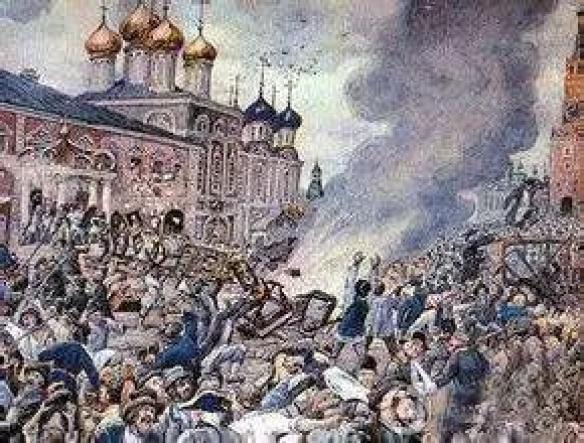
Justinian plague
(541-542)
▽
Justinian plague refers to the first large-scale plague that broke out in the Mediterranean world from 541 to 542 AD. It caused extremely serious losses and deep damage to the Byzantine Empire. Its extremely high mortality rate caused the population of the Byzantine Empire to drop significantly, the labor force and troops to drop sharply, and the normal life order was seriously damaged. It also had far-reaching social negative consequences, and had a far-reaching impact on the historical development of the Byzantine Empire, the Mediterranean and Europe.
After the 4th century A.D., the once-prosperous Roman Empire gradually split into two parts: East and West. The emperors of the Byzantine Empire, which is far from the east, have always regarded themselves as the orthodox heirs of the Roman Empire, so they have been trying to recover lost ground, reunify the Roman Empire and reproduce the glory of the past. By the 6th century, Justinian, the emperor of Byzantine Empire, decided to take action to realize this dream. Thus, Justinian launched a conquest war against the western Mediterranean world in 533 AD. However, just as he swept across North Africa and conquered Italy, and was about to reappear the glory of the Roman Empire, an unprecedented plague came unexpectedly, which made the dream of rejuvenating the Eastern Roman Empire come to nothing. In 541 AD, the plague began to break out in Egypt, a territory of the Eastern Roman Empire, and then quickly spread to the capital Constantinople and other areas.
At that time, there were many strange and horrible scenes: when people were talking to each other, they couldn’t start shaking and then fell to the ground; When people are shopping, standing there talking or counting change, death will come unexpectedly. The poor people who slept on the street were the first to be infected with the plague. At the worst of the plague, 5,000 to 7,000 people died in one day, even tens of thousands of people died unfortunately.
In extreme fear, officials had to report to Justinian that the death toll soon exceeded 230,000, and there were no enough burial places. The bodies had to be piled up in the street, and the whole city smelled of corpses. Justinian himself was almost infected with the plague. In fear, he ordered the construction of many huge tombs that could bury tens of thousands of bodies, and recruited workers to dig holes to bury the dead with heavy money to stop the further spread of the plague. As a result, a large number of bodies, men and women, young and old, covered nearly 100 layers and were buried together. Plague killed 40% of the residents in Constantinople. It continued to ravage for half a century until a quarter of the Roman population died of plague. The famine and civil strife caused by the plague completely shattered Justinian’s ambition, and also weakened the Eastern Roman Empire to the point of collapse.
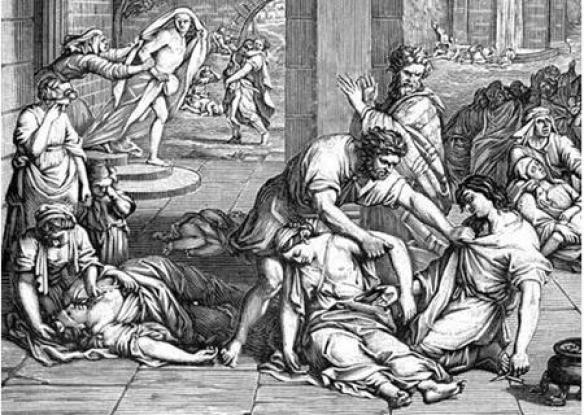
black death
(1347 – 1351)
▽
The Black Death is one of the deadliest plagues in human history. It is generally believed that it is caused by a bacterium called plague. But recently, some people think it is caused by other diseases. The origin of plague has caused widespread controversy among experts. Some historians believe that the Black Death began in China or Central Asia in the 1420s and 1930s. In the following years, it was carried by businessmen and soldiers to Crimea in southern Russia. In the 1440s, the epidemic spread from Crimea to Western Europe and North Africa. The Black Death caused 75 million deaths worldwide, including 25 million to 50 million deaths in Europe.
A symptom of the Black Death is that there are many black spots on the patient’s skin, so this special plague is called "Black Death". For those infected with the disease, painful death is almost inevitable, and there is no possibility of cure.
The pathogen that caused the plague was carried by fleas hidden in the fur of black mice. In the 14th century, there were many black mice. Once the disease occurs, it will spread rapidly. Between 1348 and 1350, a total of 25 million Europeans died of the Black Death. However, the epidemic did not stop there. In the next 40 years, it happened again and again.
Before the plague bacteria broke out again in the 1420s, it had been lurking in the Gobi desert of Asia for hundreds of years, and then it quickly spread around with the blood in fleas on rats, from China to Central Asia and Turkey along the caravan trade route, and then it was taken to Italy and entered Europe by ship. The dense population in Europe has become the gunpowder barrel of this disease. In three years, the Black Death ravaged the whole European continent and then spread to Russia, resulting in the death of nearly one third to half of the Russian population.
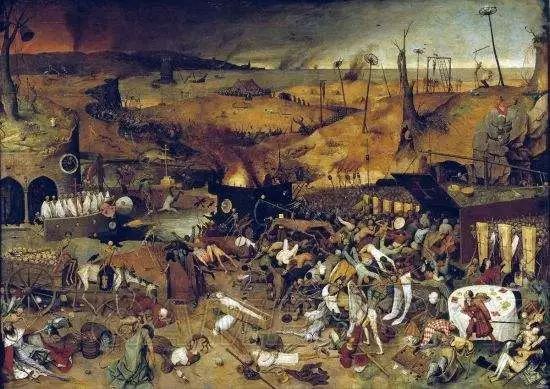
American plague
(16th century)
▽
Before the arrival of Europeans, there were 4 million to 5 million aborigines living in America, most of whom died in the 16th century, and some historians even called it "the biggest genocide in human history". However, the most direct killer who took the lives of Indians was not the guns of Europeans, but the plague they brought.
When Columbus arrived in the New World, Europeans had already experienced the catastrophe of fatal infectious diseases for many times, and also found ways to treat some infectious diseases. However, America was isolated from Eurasia for a long time before, and Indians were almost completely isolated from these diseases. European diseases began to spread to the New World after Columbus’s first trip to America. Mumps, measles, smallpox, cholera, gonorrhea and yellow fever, which have long been adapted by Europeans, are extremely lethal to Indians because their immune systems are almost immune, especially measles and smallpox. Therefore, even though the Aztecs and other Central American aborigines had walls that Europeans could not break, they were defeated by foreign plagues.
The plague destroyed the Aztec. In 1521, when the army of Mexican colonists began to besiege the fortress of Aztecs, the Mexican aborigines, they met with stubborn resistance and the attacks were repelled again and again. The Spanish, who were badly hit, thought that the Aztecs would take the opportunity to launch a deadly counterattack, but the troops in the castle were slow to see any action. This gave the Spaniards time to breathe. On August 21st, they launched a new offensive, but they did not encounter any resistance. The situation in the castle made them unbelievable: dead bodies were everywhere, and the smell of rotting bodies was everywhere. A force more deadly than the Spanish army had swept through the city, that is, the plague.
Some people once thought that it was backward weapons and technology that made American Indians lose to western colonists. Because in the traditional concept, the advanced weapons of Europeans have always been the key to their victory, but the western muskets at that time were not advanced. Indians soon found that although muskets were powerful, it was not easy to aim at them, and their fear of new weapons disappeared. And the long-range power of Indian bows and arrows is not inferior. In the 15th century, Inca culture in Latin America reached its peak. They built fields, had a clear social division of labor, and created a prosperous economy. Their knowledge of astronomy and geography was enough to amaze modern people. However, such a plague has made such a not backward race on the verge of extinction in just a few decades.
In fact, the spread of infectious diseases in Europe completely exceeded the speed of colonists’ advance to the American continent, and most Indians who learned of the arrival of Europeans from coastal residents were also infected with new diseases. Therefore, when the colonists arrived in Chile in the 1520s, the Inca civilization here had already been hit hard by smallpox, and almost all the royal families were killed by the plague. The new battle for the throne split the whole country in two, which gave the Spaniards an opportunity.
Resistance to disease was also the reason why the plague prevailed at that time. Infectious diseases are mostly mutated from animals, first transmitted to people, and then spread among human groups. Because Europe has a long history of agriculture and a large number of livestock, frequent contact with germs has formed adaptability for thousands of years; Indians, on the other hand, are not. The underdevelopment of agriculture makes them congenital lack of experience in contact with livestock. Their bodies rarely encounter such germs, so they have no immunity at all, so they are defeated in front of smallpox. Africans, on the other hand, have similar immune systems and resistance because of their earlier contact with Europeans. And the spread of disease can also be two-way. At that time, the only disease that was introduced into Europe from America was syphilis, which claimed the lives of a large number of Europeans.
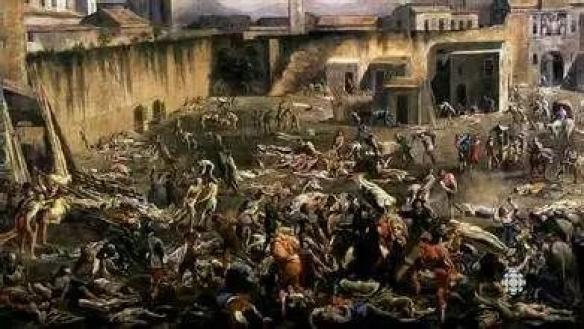
Milan plague
(1629–1631)
▽
From 1629 to 1631, a series of plagues broke out in Italy, usually called the Milan Plague. Including rumba and Venice, the plague killed about 280 thousand people. The Great Plague in Milan is the last great plague among all epidemic plagues after the Black Death began.
In 1629, German and French soldiers brought infectious diseases to mantua. During the Thirty Years’ War, the Venetian army was infected with the disease. When they retreated to north-central Italy, they spread the disease to the local people. At that time, the total population of Milan was 130 thousand, and the number of people who died of illness in this plague was as high as 60 thousand.
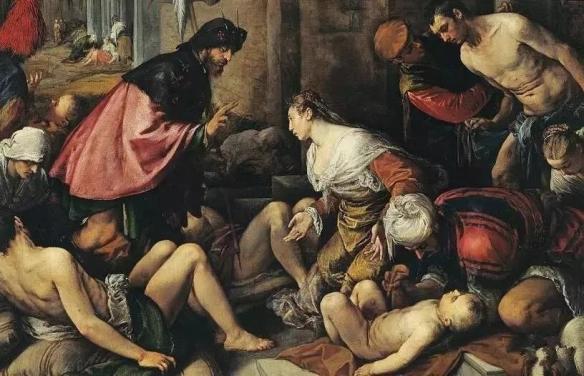
Great plague in London
(1665-1666)
▽
The Great Plague in London refers to a large-scale plague that occurred in England from 1665 to 1666. In this plague, 75,000 to 100,000 people died, more than one-fifth of the total population of London at that time. It was historically identified as a large-scale black death caused by bubonic plague, and Yersinia pestis was infected by people through fleas. This infectious disease was the last large-scale outbreak of bubonic plague in England in 1665.
There are two theories about the source of the plague. One is from France. In April 1665, two French sailors fainted at the intersection of Trulli Street and Longacre in West End of London. Later, the virus they carried caused widespread infection. Another way of saying this is that the plague virus comes from the Netherlands, where the disease has spread since 1599. The first area hit by the plague was St Gilles parish in London. In the winter from the end of 1664 to the beginning of 1665, there were already cases there, but it was not until the spring of 1665 that the disease spread rapidly on a large scale due to the massive increase of population and the sharp deterioration of sanitary conditions. By July 1665, the plague had spread all over London. At that time, King Charles II and his family were forced to leave London for Oxfordshire, but the mayor and counselor were still sticking to their posts. And some clergy, doctors and pharmacists have been busy all summer. The streets are full of doctors in charge of plague, although many of them are unlicensed.
Because the plague spread very quickly, people had to seal off the houses where the sick people lived, and paint the Red Cross outside the closed door with the words "God bless" written on it. No one was allowed to enter or leave. Only at a limited time every day, food and water are sent through the window by special personnel. Thousands of patients died miserably under such bad conditions, and at most, no fewer than ten thousand people died in a week. By early September, the bustling city of London had completely turned into a silent dead city. All the shops are closed, there are almost no pedestrians in the street, and the roadside is covered with lush weeds. The only job in the city that can break the silence from time to time is to transport the bodies. Every night, the corpse truck "Gollum, Gollum!" The sound of wheels and the mournful ringing of cars made people feel creepy. At first, the burial work was only carried out in the middle of the night. Later, the number of the dead was too large, and it had to be carried out day and night. The bodies of the deceased were littered with corpse trucks and transported to burial pits everywhere. There, the workers in charge of burying bodies often cover their faces, ring bells and say, "rest in peace!" " Pour the body into the pit in a hurry, cover it with thin soil and leave in a hurry.
Records show that the number of deaths in London has been rising from 1,000 to 2,000 per week, and by September 1665, there were 7,000 deaths per week on average. By late autumn, the situation had been controlled to a certain extent. By February 1666, the city was considered safe enough to welcome the king. At the same time, due to the commercial exchanges with the European continent, the plague spread to France. After that, until September 1666, the plague was still moderately prevalent. On September 2 and 3, a fire broke out in the city of London, which destroyed most of the infected houses, which was the beginning of the improvement of the situation. Another possible reason is that most of the infected people have died. Since then, the city of London has been rebuilt on the basis of the fire, and it has been reborn after this plague.
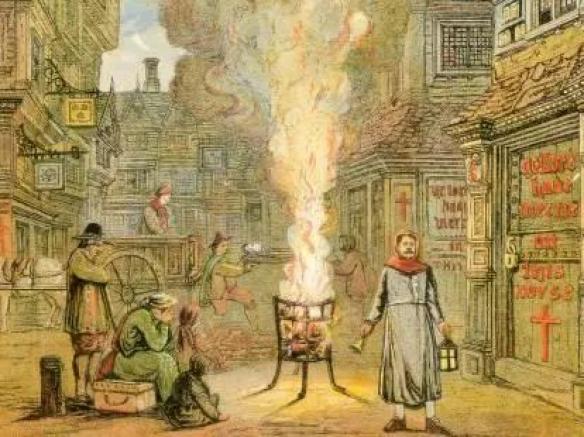
the great plague of marseille
(1720 – 1722)
▽
In 1720, Marseille was hit by a plague, which was the worst disaster in the city’s history and one of the worst plagues in Europe in the early 18th century.
In 1720, a plague broke out in Marseille, France, affecting the whole city and surrounding cities, killing 100 thousand people. The plague came and went quickly, and Marseille quickly recovered from it. It took only a few short years for the economy to recover and develop rapidly, and trade expanded to the West Indies and Latin America. By 1765, the population growth had returned to the level before 1720. This plague is not as destructive as the Black Death in the 14th century.
The rapid end of this plague is not unrelated to the tough measures taken by the French government. The government stipulates that if Marseille citizens have any contact or communication with people in Provence and other places, they will be sentenced to death. In order to strengthen the isolation, the plague wall was also established.
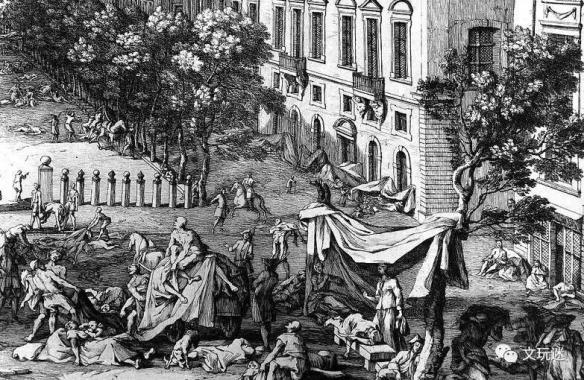
Black Death in Moscow
(1771)
▽
The first signs of plague in Moscow were at the end of 1770, and it became an epidemic plague in the spring of 1771.
At that time, the government took a series of measures, such as setting up isolation zones, destroying polluted property and closing public baths. The great plague caused great panic and anger among the citizens. The economy of the whole city is paralyzed, mainly because many factories, markets, shops and administrative buildings have been closed. Then there is a serious shortage of food, which has caused the living standards of most Moscow people to become lower and lower. In order to escape the plague, the aristocracy and rich people left Moscow one after another.
On the morning of September 17, 1771, about 1000 people gathered at the entrance of Spasskiye again, demanding the release of captured anti-government militants and the elimination of isolation. The army tried to disperse the crowd, but it couldn’t. In the end, it could only suppress the riot again. About 300 people were imprisoned. On September 26th, a government official under Carracin orlov was sent to Moscow to restore social order.
In order to alleviate the impact of the plague, the government took some measures, such as providing jobs for citizens and distributing food to them, which finally calmed the dissatisfaction of Moscow people.
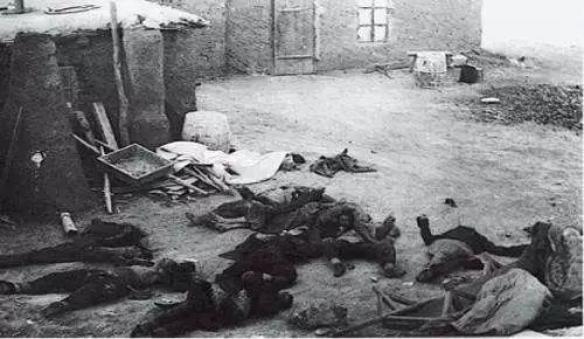
The third plague pandemic
(1885-1950s)
▽
The third plague pandemic refers to a major plague that began in Yunnan, China Province in 1855. This worldwide pandemic is famous for its rapid spread and wider spread than the previous two. The plague spread to all inhabited continents. After it first spread from Yunnan to Guizhou, Guangzhou, Hong Kong, Fuzhou and Xiamen, the death toll in these places reached more than 100,000. The plague in southern China also spread rapidly to India, to San Francisco in 1900, to Europe and Africa, and to more than 60 countries in 77 ports in 10 years. In India and China alone, more than 12 million people died of this plague. According to the World Health Organization, the parade lasted until 1959, when the number of people who died of plague in the world was reduced to about 200. The characteristic of this epidemic is that the epidemic areas are mostly distributed in coastal cities and densely populated residential areas nearby, and there are also epidemics among domestic animals.
Almost all Chinese and foreign scholars agree that the third world plague pandemic originated in Yunnan, and that Yunnan is an ancient focus of rodent plague, but they all assert that there is no natural focus of plague in Yunnan, and that the plague in Yunnan is imported. That is, it was introduced directly or from India and Myanmar. However, in 1974, plague workers in Yunnan isolated Yersinia pestis from Apodemus sinensis in Jianchuan County, Yunnan Province, which confirmed that there was a natural plague focus in western Yunnan, and scholars called it the Chiese plague focus of the longitudinal valley miletus in western Yunnan, which provided further scientific basis for the third plague pandemic.
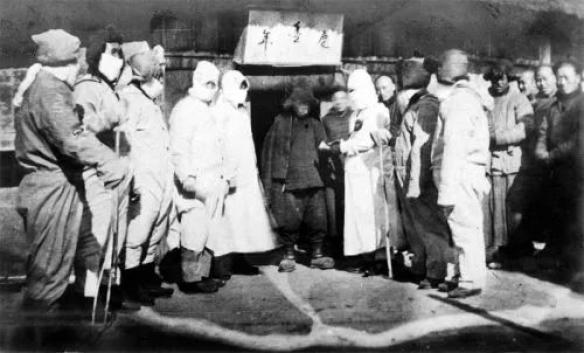
Note: This article reproduced in WeChat official account is only for sharing, not for any commercial use. If copyright issues are involved, please contact backstage to authorize or negotiate cooperation, and we will handle them properly for you as soon as possible in accordance with the copyright law.
————————————
Original title: "Ten worst plagues in human history"